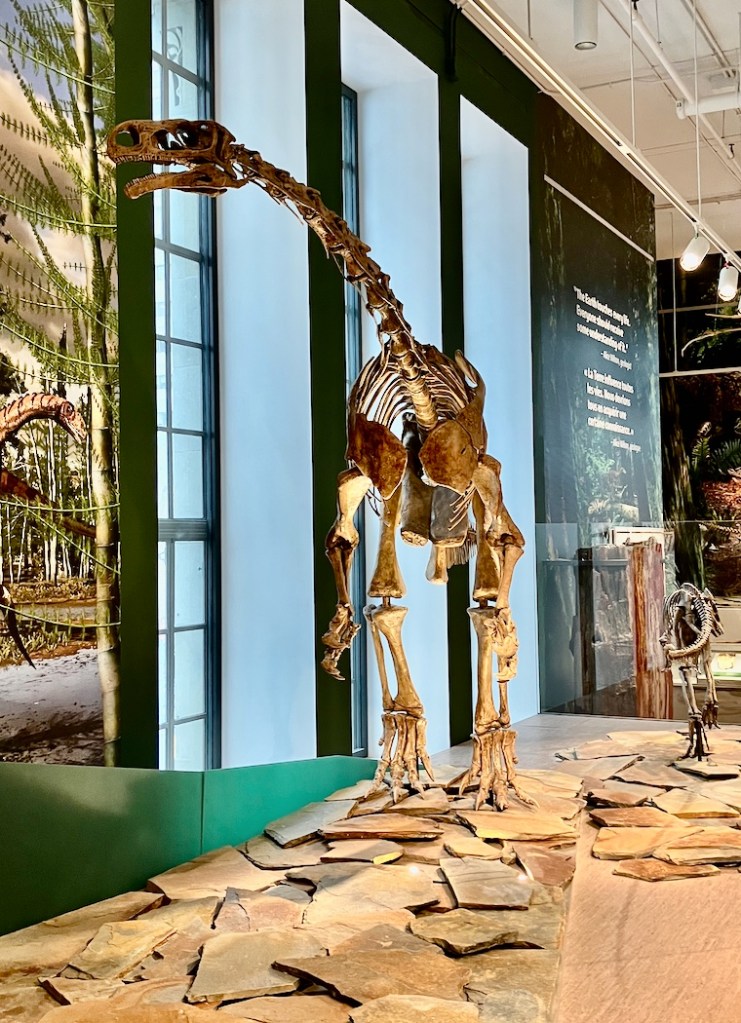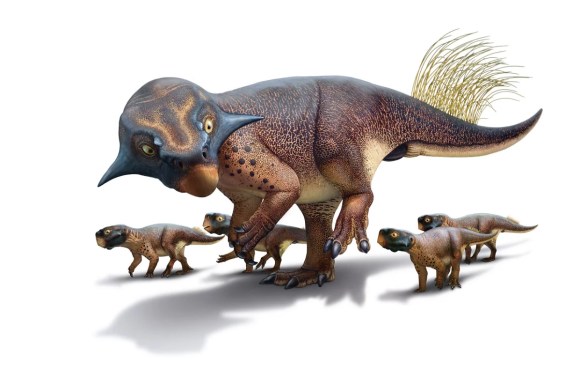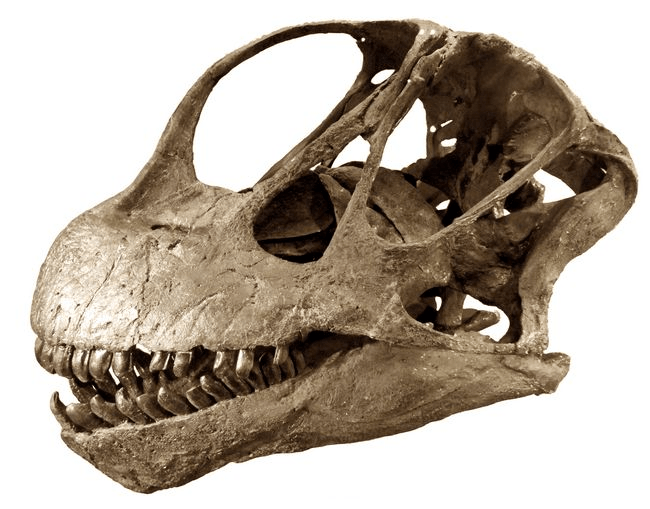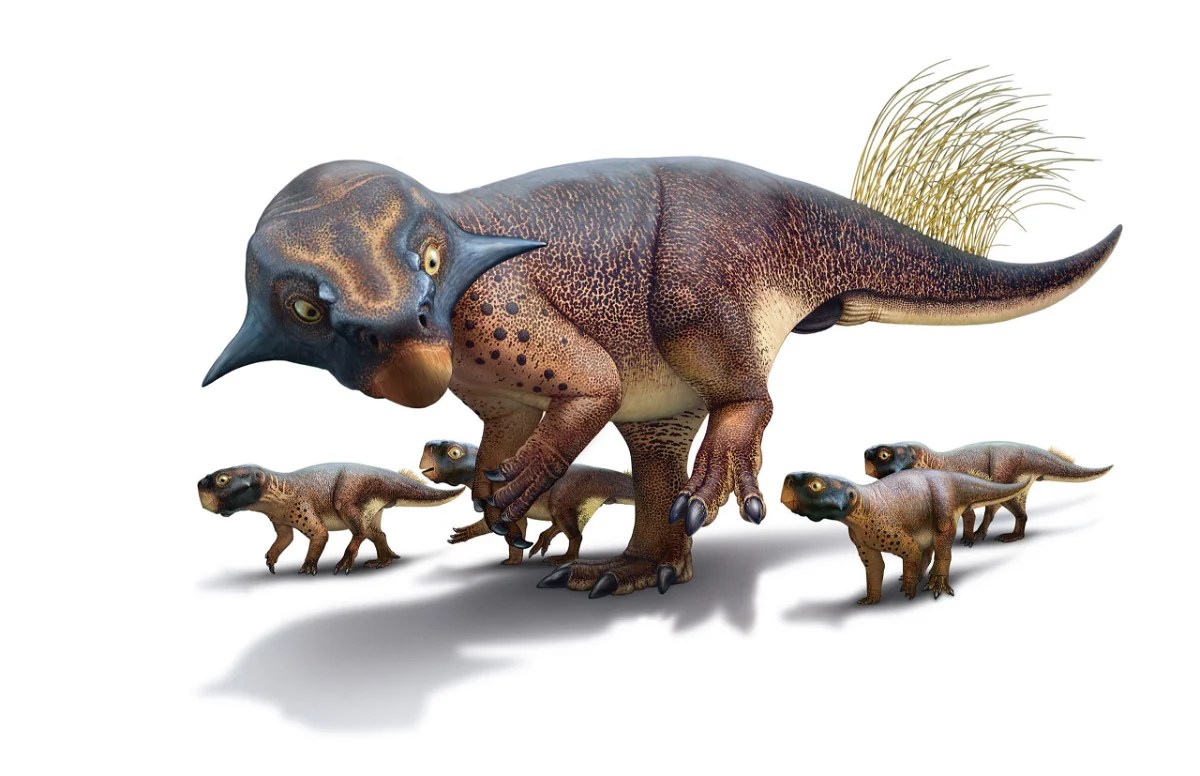If you are reading this article, I am sure you’ve heard of some of the world’s most famous dinosaurs. Whether it’s the quintessential pairing of Triceratops and Tyrannosaurus rex, the titan of the Jurassic Stegosaurus, or even the bizarre Spinosaurus, we’re all familiar with some of the celebrities of the dinosaur world.
Despite their fame, some dinosaurs are poorly known in the fossil record. Only a handful of Ankylosaurus bones exist in collections, and paleontologists infamously can’t make heads or tails of Spinosaurus. Given the disconnect between fame and abundance, you may be wondering which dinosaurs were the most common.
Enter today’s article. In this piece, I will discuss 10 of the most abundant dinosaurs in the fossil record based on the total number of specimens known to paleontologists. Some genera will be dinosaurs I am sure you have heard of, while others may be new to you. While I don’t have the exact number of specimens for each genus, I will include a ballpark estimate and provide some interesting information.
Before diving in, I should note that just because these are the most common dinosaurs in the fossil record does not mean they were the most common animals in their ecosystems. Dinosaurs and other prehistoric animals were subject to intense preservation bias after their deaths, meaning some species were more likely to be fossilized than others based on when and where they lived. It’s possible that a species known from only one or two specimens was abundant and just happened to live in an ecosystem that did not lend itself towards fossilization. So, while we may have plenty of specimens of the dinosaurs listed below, it doesn’t necessarily mean they were the most common animals in prehistory.
With that out of the way, let’s get started.
10: Allosaurus
Specimen Count: ~100
Most Notable Specimen: MOR 693, “Big Al”
Alternatively known as the hyena of the Jurassic, Allosaurus fossils are abundant throughout the Morrison Formation of the continental United States. While additional fossils come from Portugal, Allosaurus had a monopoly over the Morrison, as over 75% of all predatory dinosaur bones from the formation belong to Allosaurus. If I were to count the number of Allosaurus bite marks found on the bones of Morrison dinosaurs (including other Allosaurus), this dinosaur would be much higher on this list.

9: Plateosaurus
Specimen Count: 100+
Most Notable Specimen: SMNS F33
An early herbivorous dinosaur that lived in herds, the prosauropod Plateosaurus is known from fossils across Europe, including in deep-sea sediments off the coast of Norway. Nowhere is Plateosaurus more common than in Germany, where it has become known as the “Schwäbischer Lindwurm” after the Swabia region in Bavaria from which many of its fossils hail.

8: Diplodocus
Specimen Count: 100+
Most Notable Specimen: CM 84, “Dippy”
At an immense 24 meters long, the second dinosaur from the Morrison formation towered over Allosaurus. The specimen of Diplodocus known as “Dippy” helped bring the image of giant dinosaurs to a global audience, especially in England, where it was the centerpiece display of the Natural History Museum in London beginning in 1905. It’s a real shame it’s since been taken down…

7: Protoceratops
Specimen Count: 100+
Most Notable Specimen: “The Fighting Dinosaurs”
A small genus of Ceratopsian from Mongolia, Protoceratops is a dinosaur overshadowed by the predators it lived with, namely Velociraptor. This reality is unfair to the pig-sized animal, a genus whose entire life history has become known from the many fossils found in the barren rocks of the Gobi Desert. Protoceratops fossils may have inspired the myth of the Griffin, but little definitive evidence exists to prove this theory.

6: Triceratops
Specimen Count: (allegedly) between 200-2000
Most Notable Specimen: “Big John”
One of the most famous dinosaurs is also one of the most common. Paleontologists have said that you are likely to trip over the bones of Triceratops when walking through Montana’s Hell Creek Formation. At a bare minimum, Triceratops has the most specimens with nicknames. Amongst these names are “Big John,” “Yoshi’s Trike,” “Homer,” and “Gundy.” Not all nicknames for the genus are perfect, however – one is simply named “Horridus,” which also doubles as the species name of Triceratops. Seems a little lazy!

5: Maiasaura
Specimen Count: 200+
Most Notable Specimen: Egg Mountain
Maiasaura is famous for being one of the first dinosaurs found to exhibit parental behaviours (shoutout Oviraptor!). A typical Hadrosaur, the jaws of Maiasaura featured hundreds of teeth that were present at birth and were designed to grind up plant material. Technically, the specimen count includes some of the many eggs associated with the genus. However, since these eggs often contain fossil embryos, I will allow these to qualify as specimens.

4: Microraptor
Specimen Count: 200+ but possible 300+
Most Notable Specimen: IVPP V 13352
The smallest dinosaur on this list, Microraptor is one of the most fascinating dinosaurs to have ever lived. It was an early member of the Dromaeosaur family, which includes Velociraptor and Deinonychus, yet it may have been able to fly! The sheer number of well-preserved specimens found in China’s Jehol Biota has led to an incredible knowledge of Microraptor’s biology, from what it was eating (fish, mammals, lizards – anything small enough) to what colour its feathers were (iridescent black/blue – like a crow!).

3: Psittacosaurus
Specimen Count: 400+
Most Notable Specimen: SMF R 4970
While it may not be the most common dinosaur genus, the small Ceratopsian Psittacosaurus is by far the most species-rich, with almost a dozen valid species. Not only is Psittacosaurus the most species-rich dinosaur, but it is also perhaps the most well-known. Look no further than its private parts being described based on the specimen located at the Senckenberg Museum in Frankfurt, Germany! (For more, read “Meet Psittacosaurus, The Dinosaur That Keeps on Giving” at Max’s Blogosaurus).

2: Camarasaurus
Specimen Count: 530+
Most Notable Specimen: CM 11338
The last dinosaur of the Morrison Formation featured today, Camarasaurus is currently the most common sauropod in the fossil record. Over 530 specimens have been found, with many of these being well-preserved. A large herbivore, the rounded teeth of Camarasaurus were well suited for ingesting tough plant matter, allowing it to live alongside other sauropods despite their titanic sizes.

1-A: Coelophysis
Specimen Count: 1000+
Most Notable Specimen: AMNH FR 7224
I’ll be honest; this article is unfairly biased towards Coelophysis and the next dinosaur. While genera like Psittacosaurus and Microraptor have hundreds of individual specimens found over large areas, the abundance of the primitive theropod Coelophysis primarily comes through the discovery of massive bonebeds. One bonebed of Coelophysis in the Ghost Ranch locality of New Mexico, USA, contains 1000 individuals – almost double any other dinosaur listed. This bonebed doesn’t even account for specimens outside of Ghost Ranch, including those in Zimbabwe and South Africa.

1-B: Centrosaurus
Specimen Count: 1000+
Most Notable Specimen: AMNH 5351
Like Coelophysis, the Ceratopsian Centrosaurus finds itself atop this list due to an overwhelmingly large bonebed from Alberta, Canada. Known as the Hilda mega-bonebed, the site contains thousands of Centrosaurus individuals who likely died due to an immense storm surge from the nearby Western Interior Seaway. Hilda’s area – an estimated 2.3 square kilometres (0.88 square miles) – is hard to comprehend. If you think this area would be challenging for paleontologists to excavate in the present, imagine the stench of a few thousand rotting Centrosaurus!

Things to note:
- You may have noticed that Ceratopsians feature prominently in this list. It appears this is primarily due to preservation bias, as the four genera all come from areas extensively explored by paleontologists. So, while it is tempting to say they were the most common dinosaurs, we must consider the bias.
- Some honourable mentions for this article include Gorgosaurus, Tyrannosaurus rex, and Tenontosaurus.
- Two dinosaurs known from many specimens – Iguanodon and Mamenchisaurus – were left off this list due to their unclear taxonomic status.
- The ancient bird Confuciusornis is also known from hundreds of specimens in the Jehol Biota and is technically a dinosaur. However, for clarity, I felt it best to stick with non-avian dinosaurs.
Thank you for reading this article! If there are any dinosaurs you think should have been included, let me know in the comments!
Of all the dinosaurs listed above, Allosaurus is my favourite. A large and dangerous predator, it would have been a fearsome sight in the Jurassic! To read more about it, check out “The Monopoly of Allosaurus, the “Lion” of the Jurassic” here at Max’s Blogosaurus.
I do not take credit for any images found in this article. All images come courtesy of the tagged illustrators/sources.
Header image courtesy of Bob Nicholls, found here.

One reply on “The 10 Most Common Dinosaurs in the Fossil Record”
[…] the years following Horner’s excavations, Maiasaura has become one of the most common dinosaurs in the fossil record. The specimens at Egg Mountain, combined with more adult-populated Maiasaura […]
LikeLike